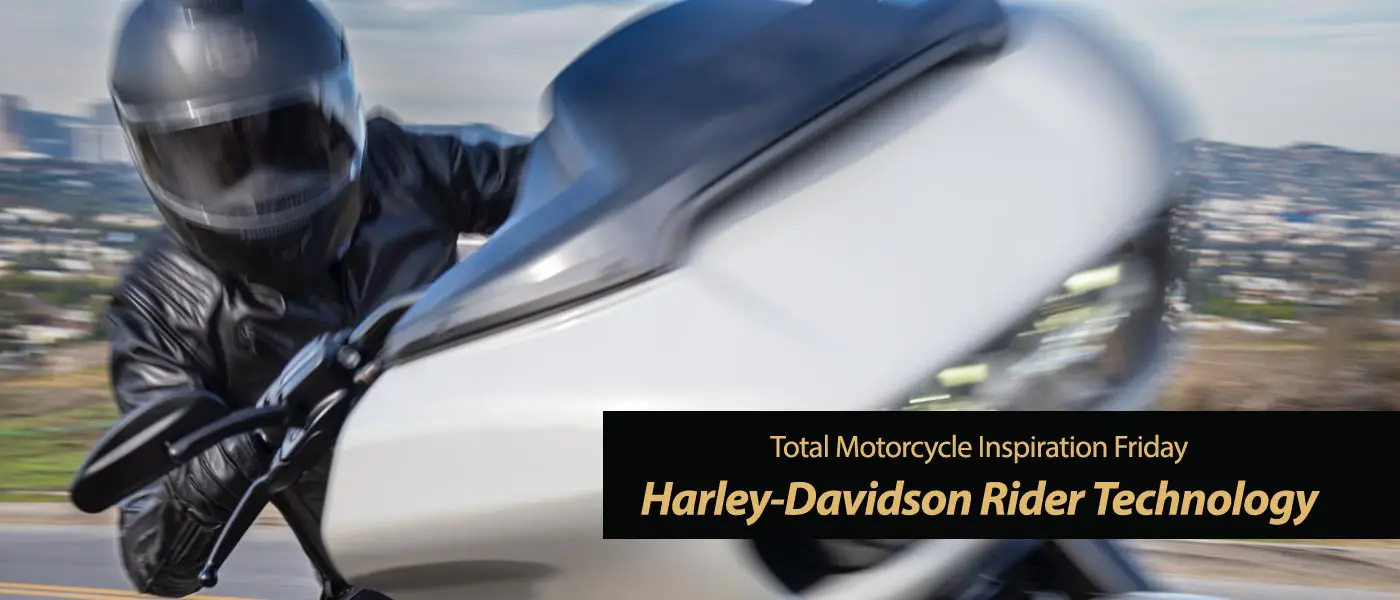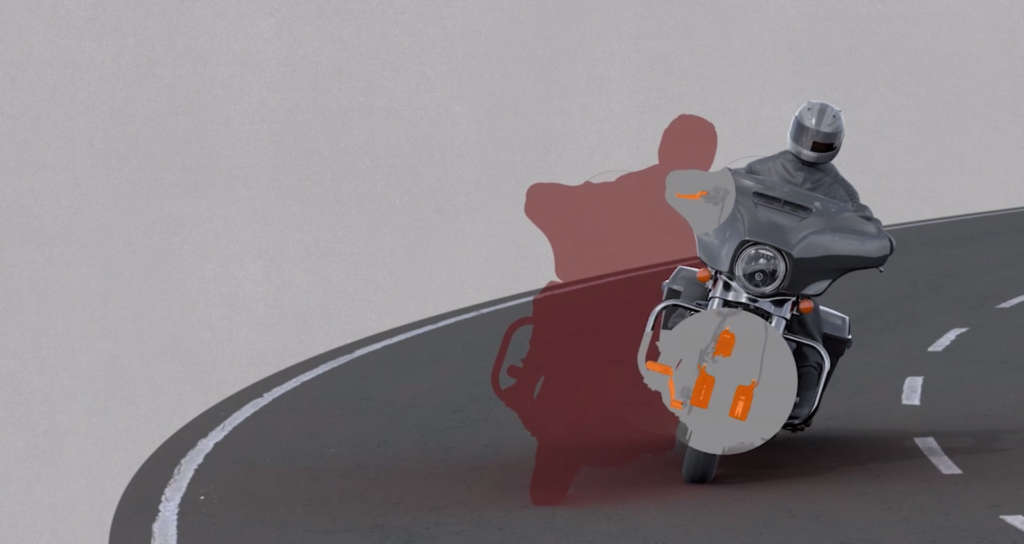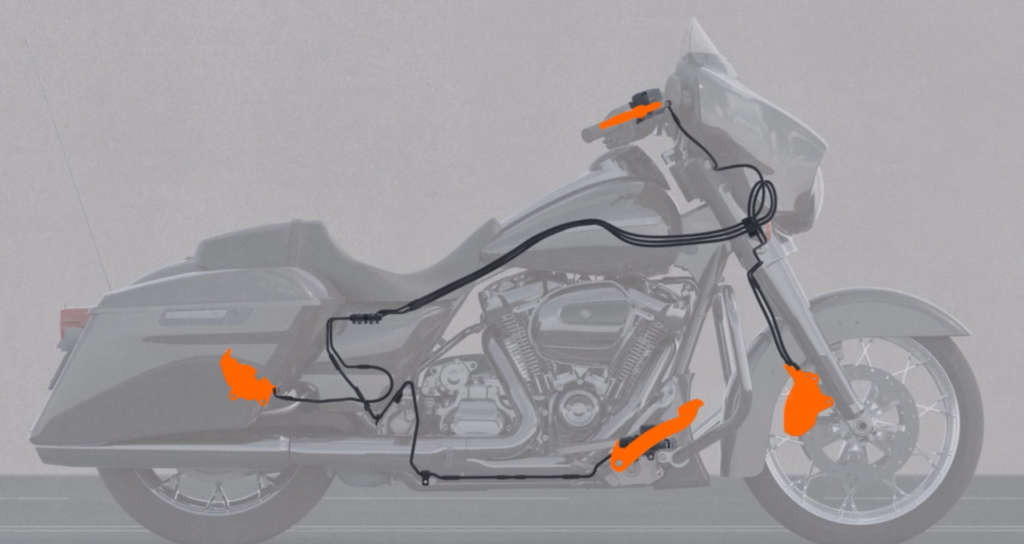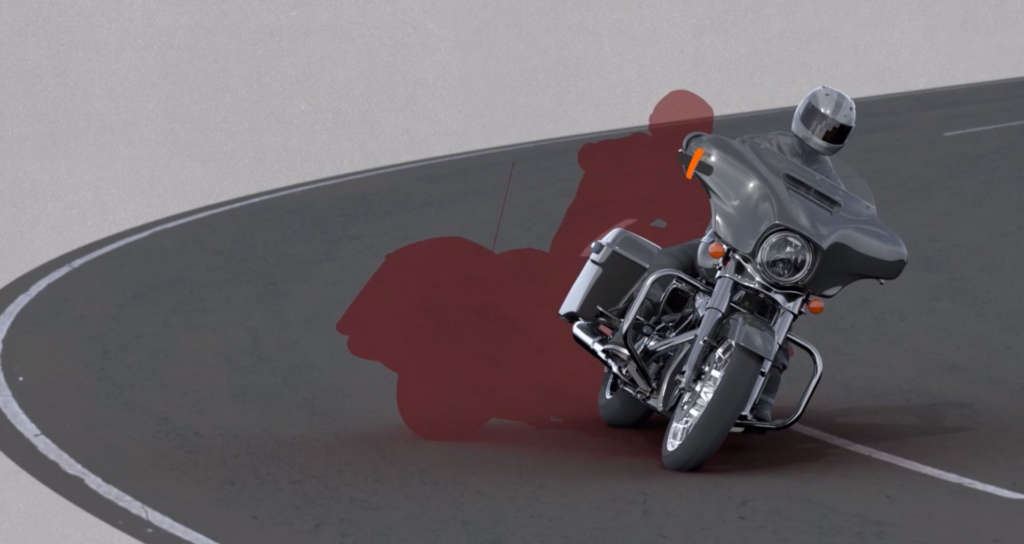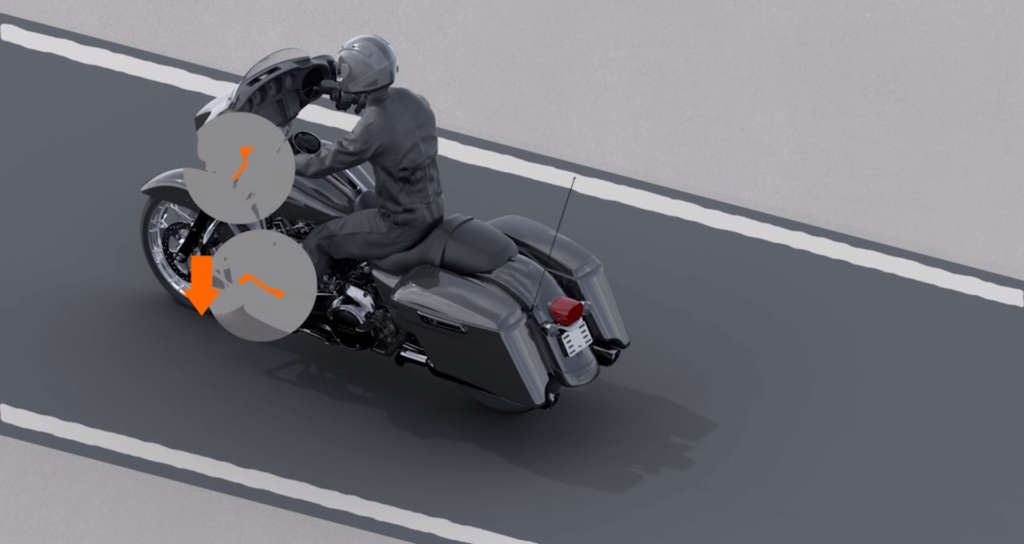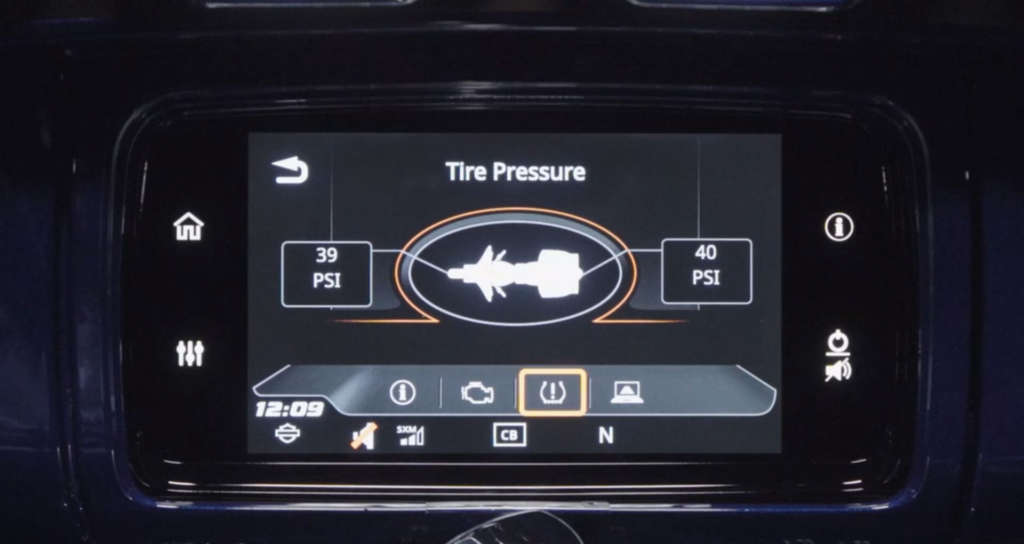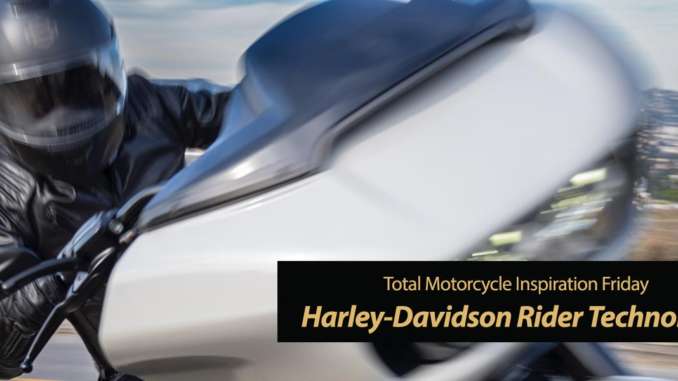
Rider Inspiration Friday this week takes a different spin with 10 Harley-Davidson Motorcycle Technologies You May Not know About. With spring riding on the horizon, these advanced technologies will keep your rubber on the road and keep you safe. But do you even know they are there or what they do behind the scenes? Harley-Davidson may seem like a laid-back heritage manufacturer but what is under the rumble may surprise you more than you think.
Total Motorcycle would like to thank Harley-Davidson for not only creating outstanding motorcycles but also outstanding technology to keep riders safe. A lot of this technology is hidden and out of sight but when you need it, you have it. Thanks H-D!
Reflex Defensive Rider Systems (RDRS) is a new collection of technology designed to match motorcycle performance to available traction during acceleration, deceleration and braking. The systems are designed to aid the rider in controlling the vehicle while accelerating and braking in a straight line or while in a turn. A rider may find the systems most helpful when riding in adverse road conditions and in urgent situations. The systems are electronic and utilize the latest electronic brake controls and powertrain technology. The features of RDRS are bundled together except where noted. RDRS features are standard on all 2020 Harley-Davidson LiveWire, CVO, Police and Trike models and optional on all 2020 Harley-Davidson Touring models in the U.S. (except Electra Glide Standard Model).
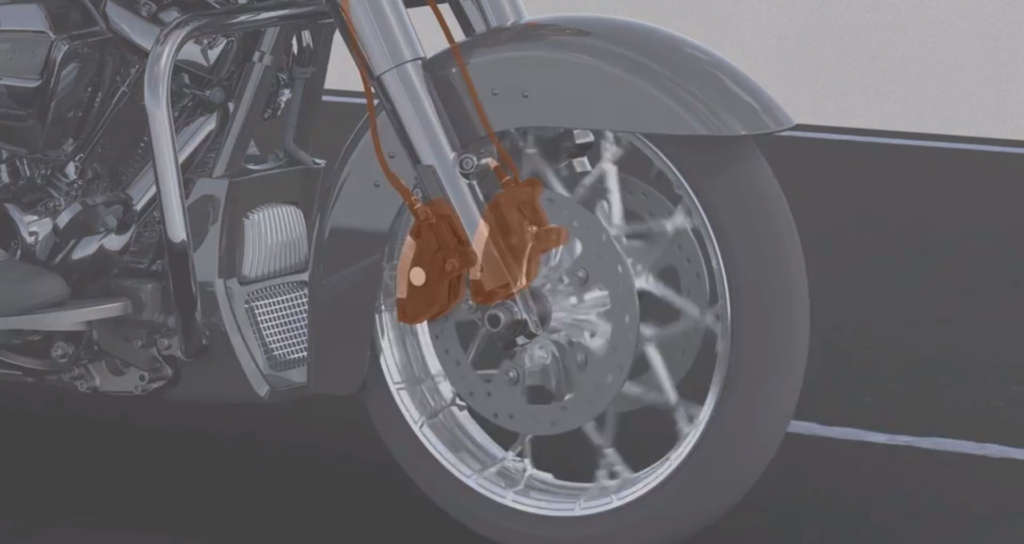
ANTILOCK BRAKE SYSTEM (ABS)
Anti-lock Brake System (ABS) is designed to prevent the wheels from locking under braking and helps the rider maintain control when braking in a straight-line, urgent situation.
ABS is standard on 2020 Harley-Davidson LiveWire, CVO, Touring, Police, Trike and select Softail models; and optional on all 2020 Harley-Davidson Street, Sportster and remaining Softail models.
ABS assists the rider in maintaining control when braking in a straight-line urgent situation. ABS operates independently on front and rear brakes to keep the wheels rolling and prevent uncontrolled wheel lock.
CORNERING ENHANCED ABS (C-ABS)
Cornering Enhanced ABS (C-ABS) is a variant of ABS that is designed to balance braking and cornering loads at the tire contact patch while under combined cornering and braking.
C-ABS is standard on 2020 Harley-Davidson LiveWire, CVO, Police and Trike models and optional on all 2020 Harley-Davidson Touring models in the U.S. (except FLHT).
C-ABS is a variant of ABS that tailors brake pressure to longitudinal slip based on motorcycle lean angle or trike lateral acceleration. The system is intended to preserve lateral grip at the tire contact patch while under combined cornering and braking loads.
ELECTRONIC LINKED BRAKING (ELB)
Electronic Linked Braking (ELB) applies braking effort to both wheels when the rider uses either the hand lever (front) or foot pedal (rear) brake control, which can help riders achieve better braking performance.
ELB is standard on all 2020 Harley-Davidson Touring and Trike models.
The Electronically Linked Braking (ELB) system allows for more balanced front and rear braking under a wide variety of brake applications. The system provides more linking when the rider is applying heavier braking and reduces or eliminates linking for light braking and low speeds. When linked, applying the front brake lever alone will cause the system to also dynamically apply an amount of braking to the rear. Applying the rear brake pedal alone will cause the system to also apply an amount of braking to the left front caliper.
CORNERING ENHANCED ELECTRONIC LINKED BRAKING (C-ELB)
Cornering Enhanced Electronic Linked Braking (C-ELB) takes into account the motorcycle lean angle or Trike lateral acceleration. C-ELB will alter the proportioning of brake pressure between the front and rear brakes when braking while cornering in an attempt to improve the ability of the motorcycle to maintain the rider’s intended path.
C-ELB is standard on all 2020 Harley-Davidson CVO, Police and Trike models and optional on all 2020 Harley-Davidson Touring models in the U.S. (except FLHT).
C-ABS is a variant of ABS that tailors brake pressure to longitudinal slip based on motorcycle lean angle or trike lateral acceleration. The system is intended to preserve lateral grip at the tire contact patch while under combined cornering and braking loads.
MORE GRIP, LESS SLIP
CORNERING ENHANCED TRACTION CONTROL SYSTEM (C-TCS)
Traction control is designed to keep the rear wheel from “spinning out” when the motorcycle is accelerating while leaning, and enhances rider control and confidence, especially in wet weather.
C-TCS is standard on all 2020 Harley-Davidson LiveWire, CVO, Police and Trike models and optional on all 2020 Harley-Davidson Touring models in the U.S. (except FLHT).
The Cornering Enhanced Traction Control System (C-TCS) is designed to prevent the rear wheel from excessive spinning under acceleration when going straight or cornering. C-TCS can improve rider confidence when available traction is compromised by wet weather, a sudden unanticipated change in the surface, or when riding on an unpaved road. The rider may select one of two traction control modes: Standard Mode is optimized for dry surfaces; Rain Mode is optimized for wet surfaces. The system can also be turned off. The action of C-TCS is also tailored when cornering based on lean angle.
SLOW YOUR ROLL
DRAG-TORQUE SLIP CONTROL SYSTEM (DSCS)
Drag-Torque Slip Control (DSCS) is designed to reduce excessive rear-wheel slip under deceleration, which typically occurs when the rider makes an abrupt down-shift gear change or decelerates on wet or slippery road surfaces.
DSCS is standard on all 2020 Harley-Davidson CVO, Police and Trike models and optional on all 2020 Harley-Davidson Touring models in the U.S. (except FLHT).
When DSCS detects excessive rear wheel slip under deceleration it will adjust engine torque delivery to better match rear-wheel speed to road speed.
CORNERING ENHANCED DRAG-TORQUE SLIP CONTROL SYSTEM (C-DSCS)
On models equipped with C-DSCS the action of DSCS may be tailored when cornering, based on detected lean angle.
C-DSCS is standard on all 2020 Harley-Davidson LiveWire models.
Cornering Enhanced Drag-Torque Slip Control (C-DSCS) is designed to reduce excessive rear-wheel slip under deceleration, which typically occurs when the rider makes an abrupt down-shift gear change or decelerates on wet or slippery road surfaces. When C-DSCS detects excessive rear wheel slip under deceleration it will adjust engine torque delivery to better match rear-wheel speed to road speed. The action of C-DSCS is also enhanced when cornering based on lean angle.
On LiveWire model, this feature may be experienced during regen braking on lower traction surfaces.
STEEP, STEADY & READY
VEHICLE HOLD CONTROL (VHC)
The primary function of VHC is to use brake pressure to keep the motorcycle from rolling, making it easier to ride away when starting on a hill, a bridge or a parking ramp.
VHC is not intended as a substitute for a parking brake in any situation.
This feature is standard on all two-wheeled 2020 Harley-Davidson CVO and Police models and optional on all two-wheeled 2020 Harley-Davidson Touring models in the U.S. (except FLHT).
The Vehicle Hold Control (VHC) applies and holds brake pressure when activated by the rider and prevents the motorcycle from rolling after the rider has released the brake controls. The primary function of VHC is to prevent the motorcycle from rolling when it is stopped – for example at a stop sign on a hill, in stop-and-go traffic on a slope, or on a steep decline out of a parking structure. VHC is designed to make it easier to ride away with confidence by minimizing the number of coordinated controls needed to pull away smoothly. The system applies brake pressure until the rider actuates the throttle and clutch to pull away. VHC may also be engaged when the motorcycle is stopped on a flat surface if the rider wants to maintain position without applying pressure to a brake control.
The rider activates VHC by momentarily applying extra pressure to either the front-brake hand lever or the rear-brake foot control after the motorcycle has come to a complete stop. If rider brakes very hard to a stop, and holds the brake pressure after stopped, VHC may also set without any added pressure. The VHC indicator light will illuminate to confirm that the rider has activated VHC, and the ABS system will hold brake pressure after the rider releases the brake control. VHC is disengaged automatically as the rider begins to pull away from a stop, or if the rider applies and releases either brake control.
VHC is not to be used as a parking brake. It will also disengage if the rider lowers the side stand (on models with a side-stand sensor, not a feature in all markets) or shifts into neutral on models without a side-stand sensor, or if the engine is turned off. In most situations after five minutes the indicator light will flash and the VHC will release if there is no rider action.
KNOW YOU’RE GOOD TO GO
TIRE PRESSURE MONITORING SYSTEM (TPMS)
TPMS alerts the rider to low tire air pressure. Maintaining proper tire air pressure is important both for vehicle performance and tire life.
This feature is standard on 2020 Harley-Davidson CVO and Police models and optional on all two-wheeled 2020 Harley-Davidson Touring models in the U.S. (except FLHT).
The TPMS displays current front and rear tire pressure on the Boom! Box GTS screen (or on the odometer on Road King models) and displays an indicator to alert the rider when tire pressure is low, and the pressure should be checked.
TPMS is a feature of RDRS and is also available as a stand-alone accessory through P&A for 2020 Harley-Davidson Touring models (except Japan) equipped with Original Equipment or Accessory wheels that accept a TPMS sensor.
NEW HARLEY-DAVIDSON TECHNOLOGIES ENHANCE SELECT MOTORCYCLE MODELS
H-D Connect Service and Reflex Defensive Rider Systems for Convenience, Confidence and Control
Select 2020 Harley-Davidson Harley-Davidson motorcycle models may be equipped with two new features designed to enhance the motorcycle riding and ownership experience.
H-D CONNECT* SERVICE
The H-D Connect service introduces subscription-based cellular connectivity to equipped Harley-Davidson motorcycles to keep riders connected to their motorcycle through their smart phone using the latest version of the Harley-Davidson App. The H-D Connect service allows owners to connect remotely to their motorcycle to view key vehicle health information. It also provides the owner with the reassurance of being able to remotely monitor their motorcycle’s security, including tamper alerts and stolen vehicle assistance, on the Harley-Davidson App.
H-D Connect service is a standard feature for 2020 Harley-Davidson Touring (except Road King/S and Electra Glide Standard models), Tri Glide Ultra, and CVO models, and the LiveWire motorcycle (in regions where available). Harley-Davidson motorcycles equipped with H-D Connect service include a cellular telematics control unit (TCU) that functions as a (LTE) enabled modem connecting equipped motorcycles to the cloud.
- Motorcycle status: With H-D Connect service and the H-D App, the motorcycle owner will be able to check key vehicle health information on the H-D App at any time, from any location where sufficient cellular signal is available. Information available through the H-D Connect service includes high-voltage battery charge status or fuel level, available range, tire pressure (on TPMS-equipped models), ride mode (on equipped models), odometer, infotainment software updates where applicable, and riding statistics. LiveWire model owners can use the H-D App to search for, and navigate to, compatible charge station locations, and while charging, view time to completion and receive charging alerts without having to physically be near the motorcycle.
- Tamper alerts and stolen vehicle tracking service: To ensure that an owner’s bike is safe and secure, the H-D connect service indicates the location of the parked motorcycle on a map in the Harley-Davidson App at any time and in any location where sufficient cellular signal is available. H-D Connect service will send an alert to the owner’s phone if the security system is activated when the motorcycle has been bumped or is being tampered with. Another alert will be sent to the owner’s phone if the motorcycle is moved out of the geo-fenced area, and GPS-enabled stolen-vehicle tracking provides peace of mind should the owner need to locate their motorcycle.
- Service reminders and notifications: Automated reminders about upcoming vehicle service requirements and other proactive vehicle care notifications will be provided to the rider through the H-D App.
* The H-D Connect service is not available in all markets. Market availability will vary. The H-D Connect service will be offered for a one-year free trial period after the purchase of a new, untitled 2020 Harley-Davidson model year Harley-Davidson motorcycle in the U.S. that is equipped with the H-D Connect service. H-D Connect will be available with a subscription charge following the initial period. The H-D Connect service will be available beginning in August 2019 in the United States, Canada, Puerto Rico and most EU countries.
REFLEX DEFENSIVE RIDER SYSTEMS (RDRS)
Reflex Defensive Rider Systems (RDRS) is a new collection of technology designed to match motorcycle performance to available traction during acceleration, deceleration and braking.** The systems are designed to aid the rider in controlling the vehicle while accelerating and braking in a straight line or while in a turn. A rider may find the systems most helpful when riding in adverse road conditions and in urgent situations. The systems are electronic and utilize the latest chassis control, electronic brake control and powertrain technology. The features of RDRS are bundled together, except where noted.
RDRS features are standard on all 2020 Harley-Davidson Harley-Davidson CVO, Tri-Glide Ultra and Freewheeler models, and the 2020 Harley-Davidson Harley-Davidson LiveWire model. RDRS features are optional on all 2020 Harley-Davidson Touring models in the U.S. (except Electra Glide Standard models).
** Available traction is determined by the road/tire interface. The systems bundled into the RDRS are only able to adjust brake pressure or powertrain torque in an attempt to keep the forces at the tire from exceeding available grip. These technologies do not have the ability to increase grip, or to intervene when the rider has not made a brake or throttle application (e.g. coasting through a corner with the clutch disengaged). RDRS is not a system to directly influence vehicle direction. This is a key difference between motorcycle RDRS and Automotive Stability Control. The rider is ultimately responsible for speed, steering, and path corrections.
Features of RDRS include:
- Cornering Enhanced Electronic Linked Braking (C-ELB)This feature applies braking effort to both wheels when the rider uses either the hand lever (front) or foot pedal (rear) brake control, which can help many riders achieve better braking performance. The Electronically Linked Braking (ELB) system provides more responsiveness and allows for more balanced front and rear braking under a wide variety of brake applications. The system provides more linking when the rider is applying heavier braking and reduces or eliminates linking for light braking and low speeds. When linked, applying the front brake lever alone will cause the system to also dynamically apply an amount of braking to the rear. Applying the rear brake pedal alone will cause the system to also apply an amount of braking to the left front caliper. C-ELB takes into account the motorcycle lean angle or Trike lateral acceleration. C-ELB will alter the proportioning of brake pressure between the front and rear brakes when braking while cornering in an attempt to improve the ability of the bike to maintain the rider’s intended path.The C-ELB feature is standard on all 2020 Harley-Davidson CVO and Police models and optional on all 2020 Harley-Davidson Touring models in the U.S. (except Electra Glide Standard models).
- Cornering Enhanced Antilock Braking System (C-ABS)Anti-Lock Braking System is designed to prevent the wheels from locking under braking and helps the rider maintain control when braking in a straight-line, urgent situation. ABS operates independently on front and rear brakes to keep the wheels rolling and prevent uncontrolled wheel lock. C-ABS is a variant of ABS that takes into consideration the lean angle of a two-wheel motorcycle, or the lateral acceleration of a Trike model. The brake pressure required to limit wheel slip when cornering is typically lower than the pressure required under straight line operation.The C-ABS feature is standard on 2020 Harley-Davidson LiveWire, CVO, Trike, and Police models and optional on all 2020 Harley-Davidson Touring models in the U.S. (except Electra Glide Standard models). ABS is a feature on all other H-D models (or where selected in lieu of C-ABS).
- Cornering Enhanced Traction Control System (C-TCS)C-TCS is designed to prevent the rear wheel from excessive spinning under acceleration when going straight or cornering. C-TCS can improve rider confidence when available traction is compromised by wet weather, a sudden unanticipated change in the surface, or when riding on an unpaved road. The rider may select one of two traction control modes: Standard Mode is optimized for dry surfaces; Rain Mode is optimized for wet surfaces. The system can also be turned off. The action of C-TCS is also tailored when cornering based on lean angle.This C-TCS feature is standard on all 2020 Harley-Davidson LiveWire, CVO and Police models and optional on all 2020 Harley-Davidson Touring models in the U.S. (except Electra Glide Standard models).
- Drag-Torque Slip Control System (DSCS) and Cornering Enhanced Drag-Torque Slip Control System (C-DSCS)DSCS is designed to reduce excessive rear-wheel slip under deceleration, which typically occurs when the rider makes an abrupt down-shift gear change or decelerates on wet or slippery road surfaces. When DSCS detects excessive rear wheel slip under deceleration it will adjust engine torque delivery to better match rear-wheel speed to road speed. On models equipped with C-DSCS the action of DSCS may be tailored when cornering, based on detected lean angle (two-wheel motorcycles) or lateral acceleration (Trike models).DSCS is standard on all 2020 Harley-Davidson CVO and Police models and optional on all 2020 Harley-Davidson Touring models in the U.S. (except Electra Glide Standard models). C-DSCS is standard on all 2020 Harley-Davidson LiveWire and Trike models
- Vehicle Hold Control (VHC)VHC applies and holds brake pressure when activated and prevents the motorcycle from rolling after the rider has released the brake controls. The primary function of VHC is to prevent the motorcycle from rolling when it is stopped – for example at a stop sign on a hill, in stop-and-go traffic on a slope, or on a steep decline out of a parking structure. VHC is designed to make it easier to ride away with confidence by minimizing the number of controls needed to pull away smoothly. The system applies brake pressure until the rider actuates the throttle and clutch to pull away. VHC may also be engaged when the motorcycle is stopped on a flat surface if the rider wants to maintain position without applying pressure to a brake control.The rider activates VHC by momentarily applying extra pressure to either the front-brake hand lever or the rear-brake foot control after the motorcycle has come to a complete stop. If rider brakes very hard to a stop, and holds the brake pressure after stopping, VHC may also set without any added squeeze. A VHC indicator light will illuminate to confirm that the rider has activated VHC, and the ABS system will hold brake pressure after the rider releases the brake control. VHC is disengaged automatically as the rider begins to pull away from a stop, or if the rider applies and releases either brake control.VHC is not to be used as a parking brake, and will disengage if the rider lowers the side stand (on models with a side-stand sensor, not a feature in all markets) or shifts into neutral on models without a side-stand sensor, or if the engine is turned off. In most situations after five minutes the indicator light will flash and the VHC will release if there is no rider action.
The VHC feature is standard on 2020 Harley-Davidson CVO and Police models and optional on all 2020 Harley-Davidson Touring models in the U.S. (except Electra Glide Standard models). VHC is not intended as a substitute for a parking brake in any situation.
- Tire Pressure Monitoring System (TPMS)TPMS alerts the rider to low tire air pressure. Maintaining proper tire air pressure is important both for vehicle performance and tire life. The TPMS displays current front and rear tire pressure on the Boom! Box GTS screen (or on the odometer on Road King models) and displays an indicator to alert the rider when tire pressure is low, and the pressure should be checked.TPMS is a feature of RDRS and is also available as a stand-alone accessory through Harley-Davidson Genuine Motor Parts & Accessories for 2020 Harley-Davidson Touring models (except Japan) equipped with original equipment or accessory wheels that accept a TPMS sensor.The TPMS feature is standard on 2020 Harley-Davidson CVO and Police models and optional on all 2020 Harley-Davidson Touring models in the U.S.
RDRS for Trike Models: Harley-Davidson Freewheeler and Tri Glide Ultra models are equipped with Trike-specific RDRS with Cornering Enhanced C-ELB, C-ABS, C-TCS, and C-DSCS. The CVO Tri Glide model will add TPMS to the Trike-specific RDRS.
ABOUT HARLEY-DAVIDSON MOTOR COMPANY
Since 1903, Harley-Davidson has fulfilled dreams of personal freedom by leading the innovation of two-wheeled mobility. The company offers an expanding range of leading-edge, distinctive and customizable motorcycles and brings the brand to life through Harley-Davidson riding experiences and exceptional motorcycle parts, accessories, riding gear and apparel. Learn more about how Harley-Davidson is Building the Next Generation of Riders at www.harley-davidson.com.
IMPORTANT NOTE
Available traction is determined by the road/tire interface. RDRS features on motorcycles are only able to adjust brake pressure or powertrain torque in an attempt to keep the forces at the tire from exceeding available grip. These technologies do not have the ability to increase grip, or to intervene when the rider has not made a brake or throttle application (e.g. coasting through a corner with the clutch disengaged). RDRS features on motorcycles do not have the ability to directly influence vehicle direction. This is a key difference between motorcycle RDRS and Automotive Stability Control. The rider is ultimately responsible for steering and path corrections.
Total Motorcycle would like to thank Harley-Davidson for inspiring us to bring you this week’s Rider Inspiration Article to you!


